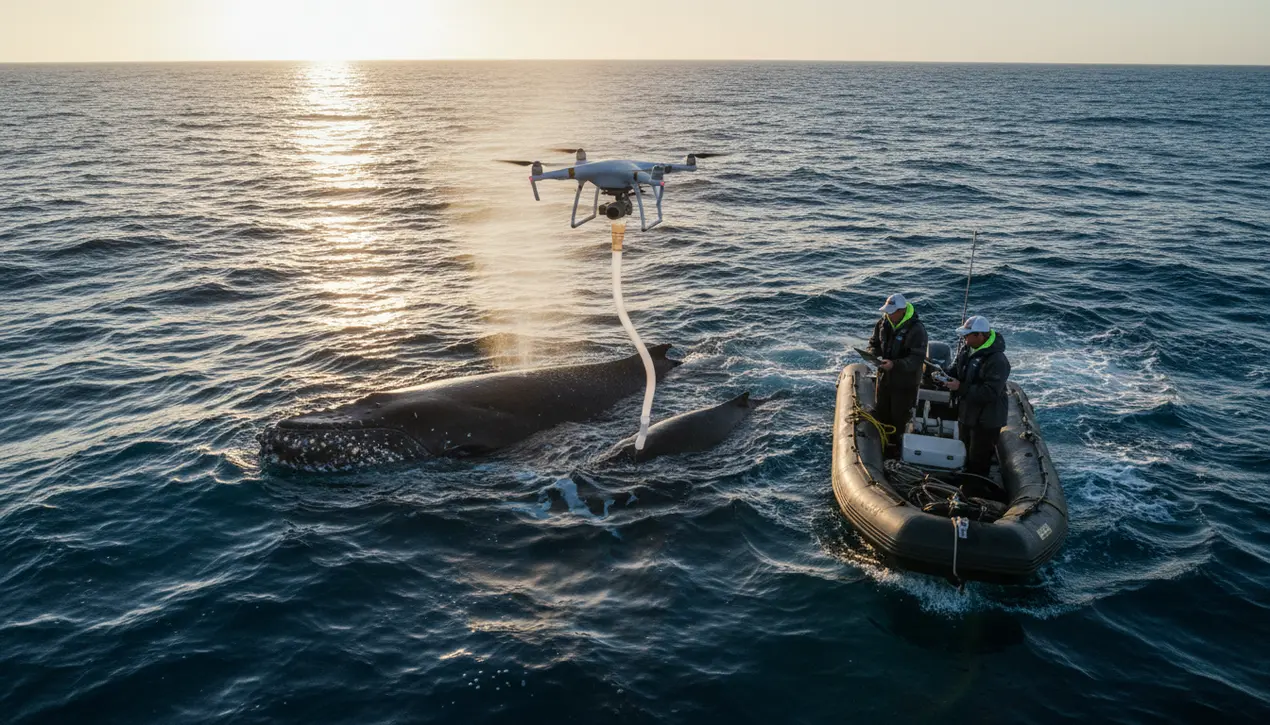
SciencebiologyMarine Biology
Flying with whales: Drones are remaking marine mammal research
RA
Rachel Adams
2 days ago7 min read3 comments
The silent, patient hover of an aerial drone is quietly revolutionizing our understanding of the ocean's most enigmatic inhabitants, offering a perspective on marine mammal research that was once the stuff of science fiction. For decades, scientists were confined to the decks of rocking boats, their observations limited to fleeting glimpses of a dorsal fin or a misty exhalation, data points as fragmented as the light on the waves.The arrival of affordable, sophisticated drone technology has shattered these limitations, acting like a telephoto lens on the very soul of the sea. Now, researchers can track a pod of humpback whales from a respectful altitude, capturing not just their numbers but the intimate, complex choreography of their social lives—the gentle guidance of a mother cow nudging her calf to the surface, the coordinated bubble-net feeding of dozens of individuals working as a single, massive organism, and the sheer, breathtaking scale of a blue whale as it glides through the azure depths.This isn't merely a upgrade in camera equipment; it's a fundamental shift in the ecological dialogue. We are no longer distant observers but quiet witnesses, collecting data on body condition, respiratory rates, and even the chemical composition of their blow without causing the stress that accompanied previous, more invasive methods.This non-intrusive window is critical in an era defined by anthropogenic chaos—from the cacophony of shipping lanes disrupting their acoustic world to the shifting abundance of krill and fish stocks due to climate change. The high-resolution footage provides a baseline of health, a visual record of the impacts of a warming, acidifying ocean on individual animals and their populations over time.It’s a tool for conservation that feels almost empathetic, allowing us to document the scars of ship strikes and the tangles of ghost fishing gear with a clarity that demands accountability. The drone’s-eye view connects the fate of these leviathans directly to the health of the entire marine ecosystem, making the abstract concept of biodiversity loss painfully tangible.As this technology becomes ubiquitous from the polar feeding grounds of the Arctic to the calving lagoons of Baja California, it is weaving a richer, more detailed tapestry of life beneath the waves, providing the irrefutable evidence needed to advocate for protected marine corridors and stricter regulations. This is more than research; it's a form of stewardship, a promise to finally see these creatures not as remote monsters or resources to be exploited, but as complex, social beings whose survival is inextricably linked to our own.
#drones
#marine mammals
#whales
#research
#technology
#featured
Stay Informed. Act Smarter.
Get weekly highlights, major headlines, and expert insights — then put your knowledge to work in our live prediction markets.
Related News
Comments
Loading comments...
© 2025 Outpoll Service LTD. All rights reserved.